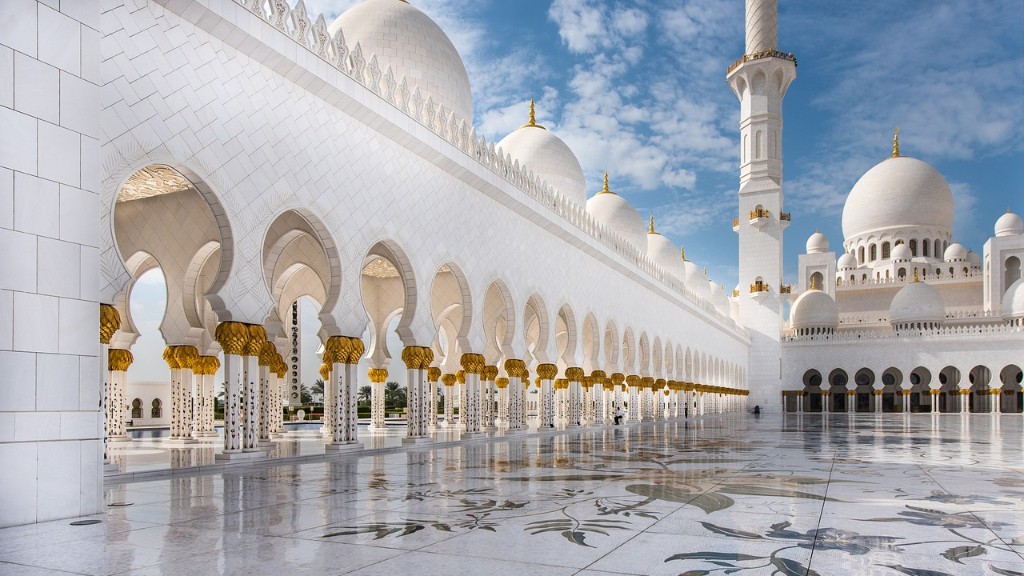Rendering in architecture is one of the most important and essential aspects of producing a quality architectural design. The purpose of rendering is to communicate to the architect and the viewers how the proposed structure will look in reality. The process of rendering in architecture combines traditionally used material and methods with digital graphics software. It consists of creating an accurate representation of a building design that contains all the necessary details and effects.
The most basic goal of architectural rendering is to provide an accessible and comprehensive representation of the proposed design. The rendering starts with an outline of the structure including all its basic physical features such as its façade, its internal spaces and surfaces, the placement of doors, windows and other such details. This outline is then enhanced by the addition of digitally rendered details, textures, environment elements and colours, to create a realistic and highly presentable scene.
Architectural renderings can be used for a variety of purposes, such as providing prospective clients with a visual representation of the proposed building design, presenting the design to a panel of reviewers, exploring potential colour schemes, or presenting the design in its final stages of development. No matter for which purpose an architectural rendering is produced, the essential part of the rendering is accuracy.
The accuracy of a rendered image is determined by the quality of the materials and methods used, the talent and experience of the renderer, and the quality of the software used for the rendering process. High-quality renderings are usually achieved using powerful digital renderings which combine intricate details and a plethora of colours and textures while keeping the renderings photo-realistic, crisp and sharp.
In addition to providing a realistic representation of the design, architectural renderings can also be used to simulate different lighting circumstances and environments, thus allowing designers to determine the best possible lightning and environmental conditions for their design. The simulation of various environmental conditions helps the designer determine the ideal outdoor or indoor environment needed to achieve their desired design, while also reducing costs in the long run.
Architectural renderings can also be used to test the feasibility of a proposed design, through the simulation of a variety of design elements such as space, walls and other such features. This testing of the proposed elements helps designers determine whether the design is feasible and efficient, as well as whether certain interior design elements are suitable for the given area or space.
It is important to remember that architectural renderings can only be as good as the material and methods used for the rendering process. It is therefore important to choose experienced professionals who have been properly trained in the use of rendering software and other related material. These professionals can help to ensure that the rendering created is of an exceptional quality.
Relevance To Modern Design
The use of rendering in architecture has become increasingly important in modern design projects. Today, advanced software tools have allowed architectural designers to create highly realistic renderings of their buildings, making it easier to visualise the design in its actual form and make adjustments as needed. With increased focus on environmental concerns, renderings have also been used to illustrate the environmental impact of the proposed design, allowing designers to make necessary changes before the construction begins.
In addition to being highly useful for designing and constructing buildings, architectural renderings are also used for marketing purposes. Presenting potential buyers with a realistic image of a building before its construction is completed can give them a better understanding of the design and create a more positive opinion of the proposed structure.
The use of architectural renderings has become increasingly popular in the architecture industry, as more and more architects are recognising the importance and benefits of using the latest technology for designing their projects. Renderings are now an essential part of the design process, and the ability to create realistic visualisations of buildings before they are constructed or fully designed is invaluable.
Potential Issues
Although renderings can be immensely useful and valuable for architectural design projects, they can also present certain issues. One of the main issues related to renderings is the fact that they are often too perfect, and can create unrealistic expectations in the viewers. This can lead to disagreements if the actual building does not look exactly like the rendering, and can even result in loss of business.
Another potential issue with the use of renderings is the fact that they are often expensive. The cost of creating a rendering can be significantly higher than what people expect, and this can hinder the design process. Additionally, renderings require extensive computer hardware and software to create, which also increases their cost of production.
Finally, renderings can also present a potential legal issue if they are presented to prospective buyers or investors. It is important to ensure that the rendering being presented is legally and accurately represented, in order to avoid any misleading or incorrect representations of a structure.
Conclusion
Rendering in architecture is an essential part of creating a successful design. It allows designers to communicate their design in a clear and accessible way, as well as simulate and test different design elements and environments. However, it is important to remember that renderings can also present potential problems, such as unrealistic expectations and potential legal issues. It is therefore important to use experienced professionals for creating renderings and to ensure that the design is accurately represented.
Evolving Technology
The technology and methods used for creating architectural renderings have been constantly evolving in recent years. Software and hardware advancements have allowed renderings to be produced faster and of higher quality, while also reducing their cost, making them increasingly accessible to a larger audience. With the combination of new tools and techniques, architects have access to unparalleled levels of detail and realism when creating their renderings.
Additionally, renderings have also become an integral part of the design process, with designers using them as an exploration tool to experiment and simulate different design elements. This has allowed designers to create highly meaningful renderings that provide realistic representations of their design projects.
Finally, renderings have also been used to visualise the environmental impact of certain design projects. With powerful software tools, designers can now simulate how certain elements within their design will interact with the environment and how this will affect the surrounding area. This has become an invaluable tool for architects, allowing them to design projects that are not only aesthetically pleasing but also minimise the environmental impact of their structure.
Advantages and Disadvantages
The use of rendering in architecture provides a variety of benefits and advantages, including the ability to create realistic representations of the proposed design, simulate different lighting and environmental conditions, test different design elements and the feasibility of the design, and present the design to a broader audience. Additionally, improvements in technology have enabled designers to create highly realistic renderings of their design projects that can be used for marketing and promotional purposes.
However, there are also some potential drawbacks to using renderings. These include the potential for unrealistic expectations when the rendered design does not match the actual building, as well as increased costs associated with the creation of renderings. Additionally, renderings can present legal issues if they are presented to potential buyers or investors without accurately representing the structure.
Future Of Rendering
As technology evolves, architectural renderings are likely to become more and more important to the design process. Architects and designers will be able to create highly realistic renderings of their projects and will be able to visually explore different design elements and environments. Additionally, renderings can be used for marketing purposes, providing potential buyers with an accurate and helpful representation of the proposed design.
Finally, as technology continues to improve, the cost of creating architectural renderings will also decrease, making them more accessible for a wider range of architects and designers. This will not only allow for more realistic designs but will also make design projects more affordable, further improving the design process.





